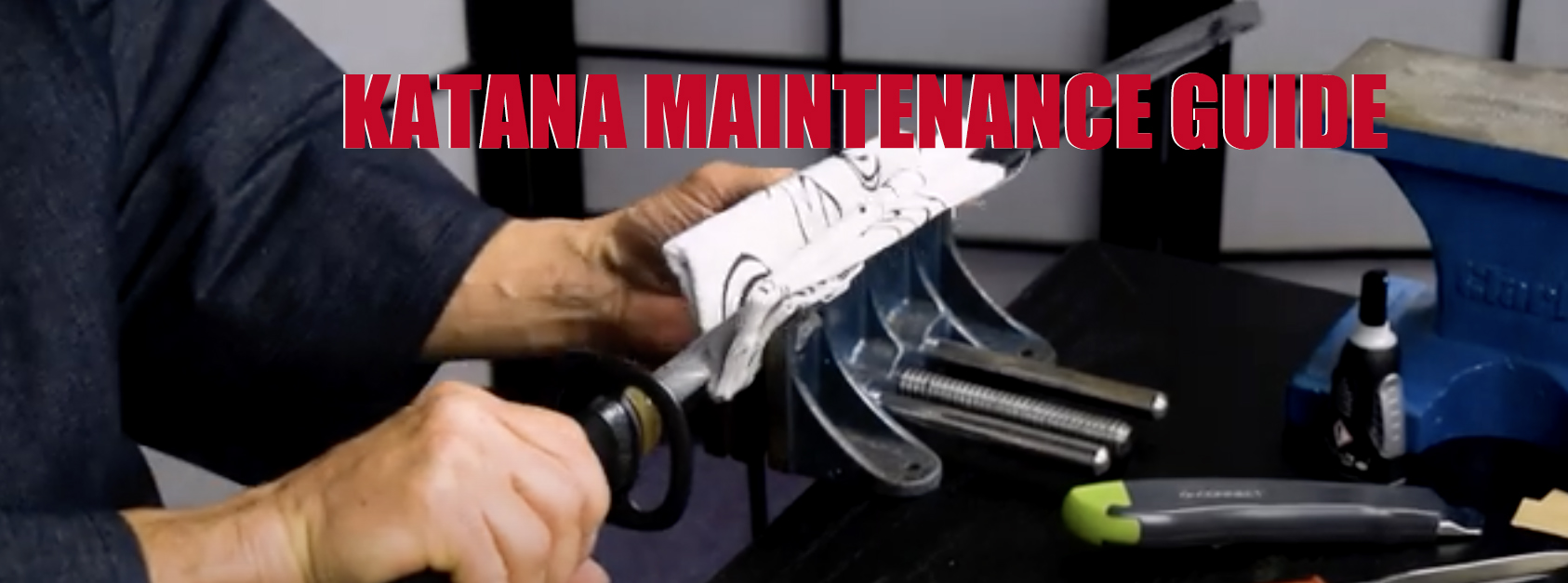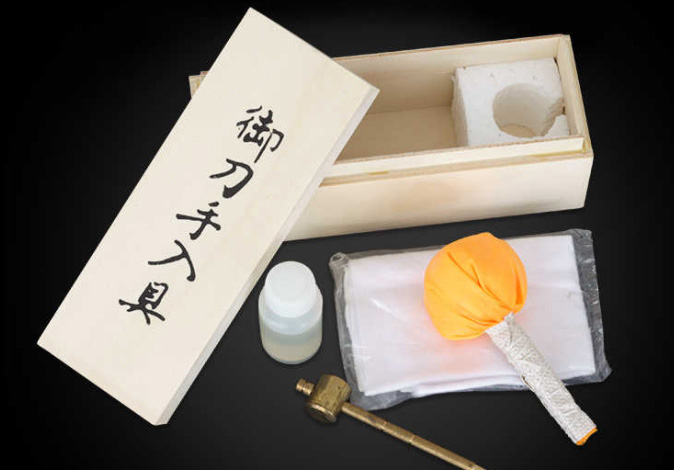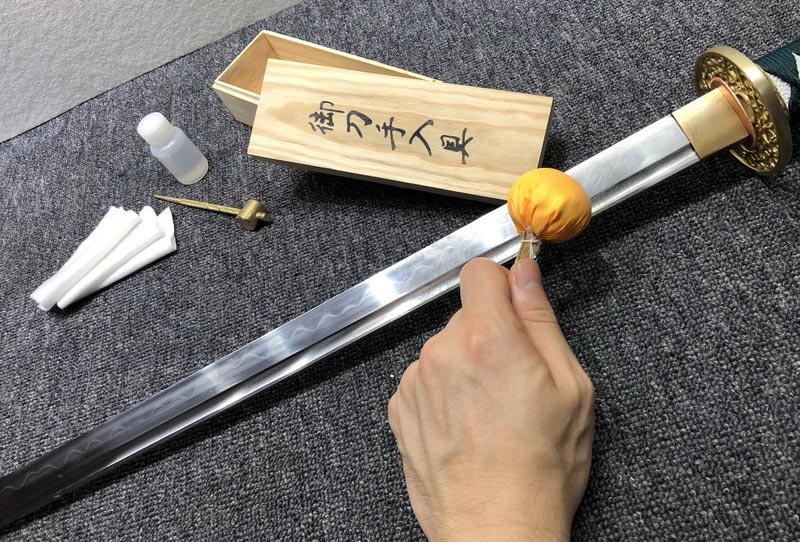Katana Maintenance Guide

Proper maintenance is crucial for the care and preservation of a Japanese samurai sword. Regular upkeep not only ensures the sword's longevity but also helps maintain its functionality, appearance, and historical value. Here is a detailed explanation of the importance of sword maintenance and the complete process involved:
Importance of Sword Maintenance:
- Preservation: Sword maintenance prevents rust, corrosion, and degradation, preserving the blade's integrity and historical significance.
- Functionality: Regular cleaning and oiling keep the blade sharp, preventing dullness and ensuring optimal cutting performance.
- Aesthetics: Proper care maintains the sword's polished appearance, showcasing its intricate hamon (temper line) and enhancing its visual appeal.
- Value: Well-maintained swords retain their value and historical authenticity, making them more desirable to collectors and enthusiasts
Complete Sword Maintenance Process:

1. Precautions:
- Ensure a clean and well-lit workspace.
- Handle the sword with clean hands to avoid transferring oils or contaminants.
2. Inspection:
- Examine the blade, handle (tsuka), and scabbard (saya) for any signs of damage, rust, or loose fittings.
- Check the handle wrapping (tsukamaki) for tightness and integrity.
3. Cleaning:
- Disassemble the sword, if possible, by removing the handle and separating the blade from the scabbard.
- Use a soft cloth or chamois to gently wipe away any dust, fingerprints, or debris from the blade, handle, and scabbard.
- Avoid using abrasive cleaners or excessive force that may damage the sword's finish.

4. Rust Removal:
- If rust is present, lightly apply a rust eraser or fine-grit sandpaper to carefully remove the rust spots. Be cautious not to scratch the blade.
- After rust removal, wipe away any residue and ensure the blade is dry.
5. Oiling:
- Apply a thin layer of sword oil (such as choji oil or mineral oil) to the entire blade using a clean cloth or cotton ball.
- Make sure the oil reaches all areas, including the tang (nakago) and the edge.
- Wipe off any excess oil to prevent buildup.
6. Handle and Scabbard Maintenance:
- Clean the handle with a damp cloth, removing any dirt or oils.
- If the handle wrapping becomes loose or damaged, consult a professional for rewrapping.
- Inspect the scabbard for any cracks or damage, and clean it using a soft cloth.
7. Reassembly and Storage:
- Reassemble the sword, ensuring all fittings are secure and aligned properly.
- Store the sword in a clean and dry location, preferably in a sword bag or display stand, to protect it from dust, humidity, and direct sunlight.
Remember, if you are unsure about any step or encounter significant damage, it's recommended to consult a professional swordsmith or restorer for assistance.
By following this comprehensive maintenance process, you can preserve the beauty, functionality, and historical significance of your Japanese samurai sword for generations to come.
